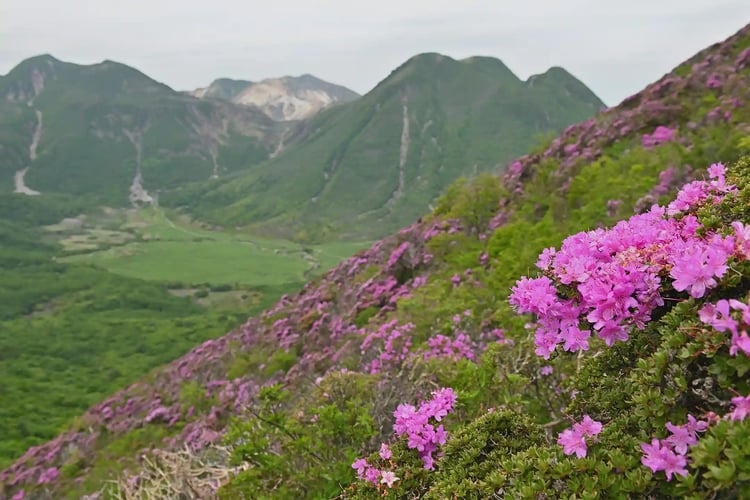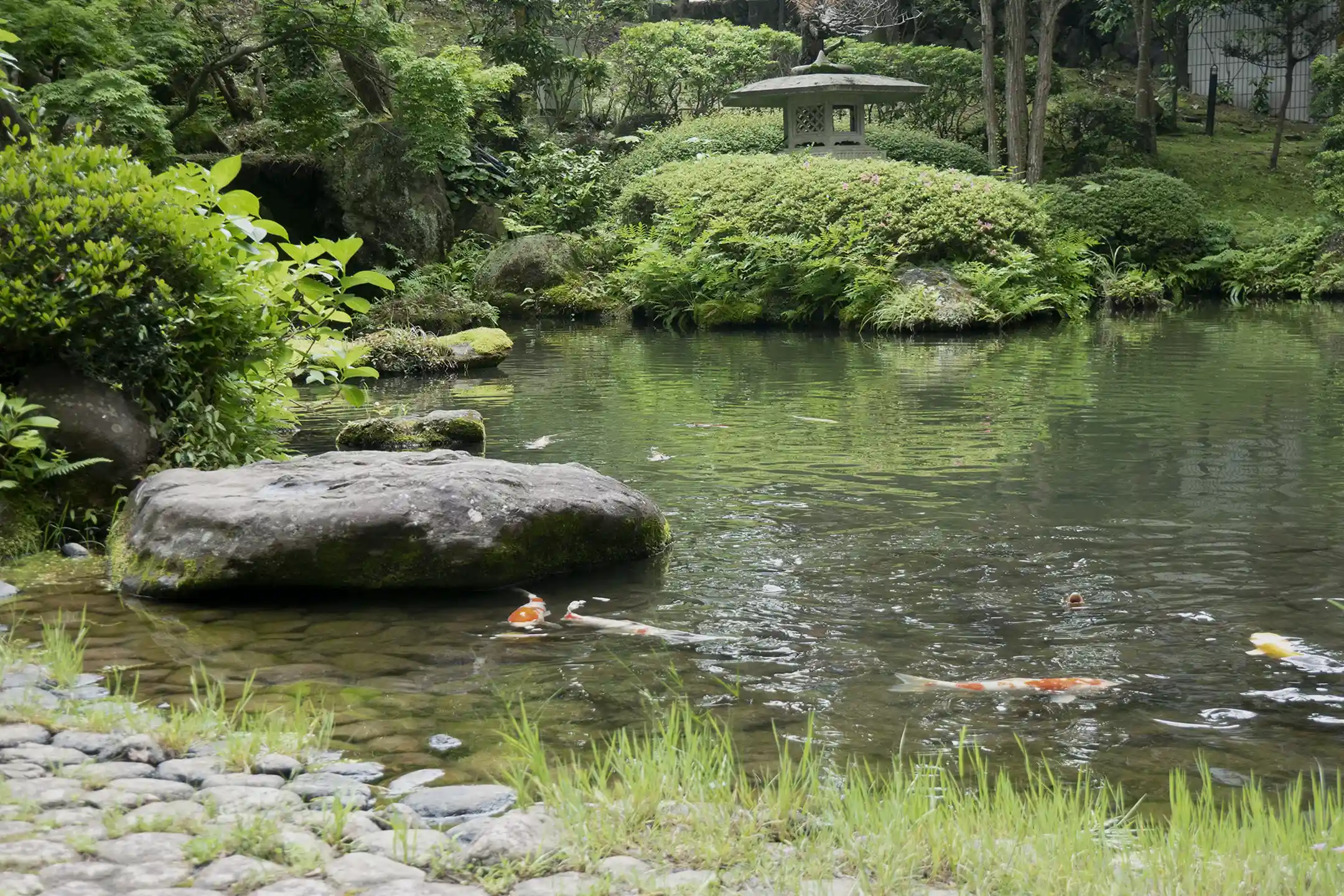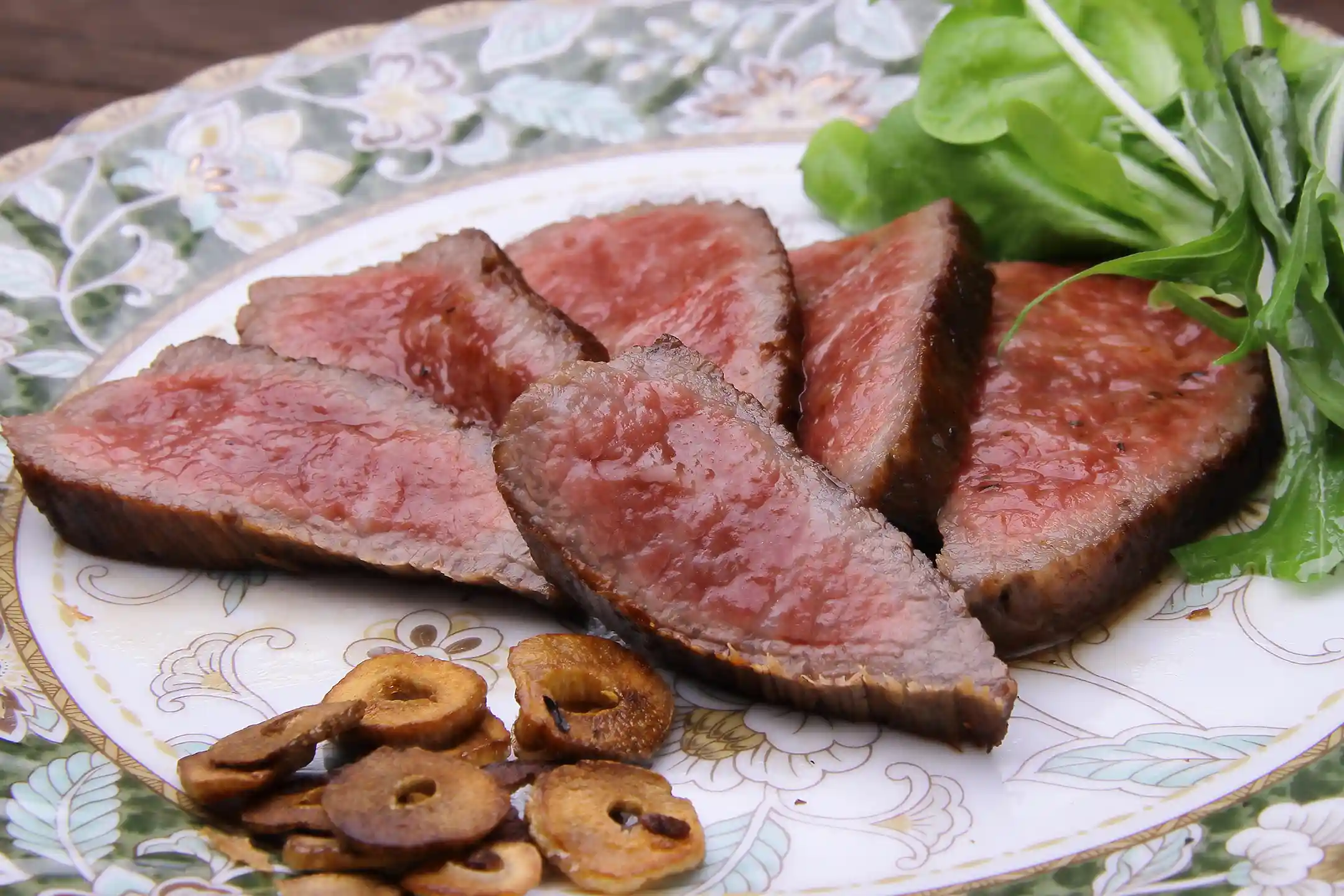Japan has a long tradition of celebrating its wide variety of plants, especially in light of the country’s vividly shifting seasons. Cherry blossoms, autumn foliage, hydrangeas, and camellias all appear prominently in poetry, paintings, and garden design—each woven into an aesthetic that honors harmony with nature, a spirit cultivated over many centuries.
Compared to Europe or North America—where nature is often admired for its grandeur—Japan tends to focus on subtle seasonal change and the understated allure of open space. This difference can inspire you to wonder why values vary from one region to another, as seen through cultural relativism or even postcolonial theory. In this blog, you’ll take a detailed look at Japan’s plant culture—from iconic seasonal blooms to Zen gardens and ikebana—to see firsthand how art, history, and nature intertwine.
The Appeal of Nature and Plant Culture Nurtured by Japan’s Four Seasons
Cherry Blossom Culture and Japanese Art | Historical Background and How to Enjoy Hanami
For centuries, cherry blossoms have signaled the arrival of spring to people across Japan. The custom of hanami—gathering beneath the cherry trees—dates back to the Heian period, when aristocrats composed poetry and played music under the petals. By the Edo period, the eighth shogun Tokugawa Yoshimune popularized the planting of cherry trees, bringing hanami to everyone from townspeople to samurai.
While park picnics are certainly common in the West, hanami in Japan emphasizes admiring the blossoms themselves—a nod to the traditional view that life’s beauty lies in its transience, a concept echoed in classic poetry and ukiyo-e prints. For instance, Utagawa Hiroshige’s depiction of Ueno and Shinobazu Pond still feels familiar if you visit Ueno Onshi Park today. Experiencing hanami in places like Kyoto’s Maruyama Park or along the Philosopher’s Path, or in Tokyo’s Sumida Park, gives you a chance to sense a blend of history and nature, revealing a distinctly Japanese harmony that differs from most Western celebrations.
Appreciating Autumn Foliage—Japan’s Unique Seasonal Culture and Aesthetics
When autumn arrives, Japanese hillsides burst with shades of red and gold. The tradition of momijigari (autumn leaf viewing) traces back to the Nara and Heian eras, when court nobles enjoyed poetry and feasts beneath the colorful leaves. Over time, this custom spread to warriors and townspeople, forming part of a broader culture shaped by ideas like mono no aware (the awareness of impermanence) and Zen. Even today, places such as Arashiyama and Karuizawa encourage a tranquil appreciation of the changing scenery.
If you’re visiting from Europe or North America, “quietly gazing at autumn leaves” might appear intriguingly different. Rather than dismissing it as a novelty, you’ll uncover a deep cultural heritage behind momijigari, revealing it as a meaningful reflection of Japanese spirituality and history, rather than a casual outdoor pastime.
Hydrangeas and Japanese Irises | Plants that Color Japan’s Summer
Once the rainy season sets in, the soft blues and purples of hydrangeas (ajisai) and the graceful lines of Japanese irises (hanashōbu) begin to usher in early summer. Hydrangeas are native to Japan and have enchanted people since the Nara period, thanks in part to their shifting tones in the rain. You might find a perfect example at Kamakura’s Meigetsu-in temple—nicknamed the “Hydrangea Temple”—where serene surroundings and these delicate blooms blend into a scene of understated beauty.
Japanese irises, on the other hand, gained popularity during the Edo period through selective breeding, creating a refined bloom that remains a hallmark of summer gardens today. Many in Japan feel a gentle affection for these flowers—an outlook that can surprise Western travelers who notice just how deeply plants are cherished here. Even the gentle patter of rain is often seen as a welcomed part of nature’s tapestry, reflecting Japan’s long tradition of coexisting peacefully with the elements.
The Winter Scenery Colored by Camellias and Plum Blossoms, and Their Cultural Background
From winter into early spring, camellias (tsubaki) and plum blossoms (ume) bring flashes of color amid the cold. With its shiny evergreen leaves, the camellia has become a symbol of wabi-sabi, often placed in a tea room’s alcove (tokonoma). Plum blossoms, introduced from China in the Nara period, were actually more popular for flower-viewing than cherry blossoms up until the Heian period—something you can see in the ancient poems of the Man’yōshū.
Because plums open at winter’s end, they’re considered auspicious and included among the “Three Friends of Winter” (pine, bamboo, and plum). Unlike the Christmas-themed decor often found in Western winter celebrations, Japan’s approach reflects a mix of religious and philosophical influences—Shinto, Buddhist, and Confucian—that add special significance to these flowers.
Japan’s Traditional Gardens and Plant Culture Through the Lens of Zen Philosophy
Karesansui and Zen Thought | Learning About Japanese Aesthetics at Ryōan-ji and Daitoku-ji
Some of Japan’s most iconic traditional gardens are karesansui (dry landscape gardens), composed of stones, moss, and carefully raked gravel—often considered reflections of Zen principles. Kyoto’s Ryōan-ji and Daitoku-ji are prime examples, earning global praise for their perfectly balanced arrangements of white gravel and rock formations.

While many Western gardens focus on symmetry or opulence, karesansui draws its power from the purposeful use of “empty space.” This approach conveys a sense of life’s transience and encourages quiet introspection. From a cultural-relativist perspective, neither style is “better” than the other; instead, each mirrors a different approach to nature, shaped by separate historical and philosophical currents. Joining a guided tour can help you see how every stone’s placement and every viewing angle has a story to tell—transforming a stroll into a contemplative experience.
The Fusion of Contemporary Art and Traditional Gardens | A New Kind of Plant Culture
In recent years, more places have begun blending classical Japanese garden design with modern art. One remarkable example is Naoshima in the Seto Inland Sea, where world-famous architect Tadao Ando has created art complexes that integrate natural scenery with inventive architecture. By pairing centuries-old garden aesthetics with cutting-edge design, Naoshima shows that Japanese gardens can be both tranquil and daring—challenging the assumption that they’re only “quiet and traditional.”
Karuizawa, a mountain retreat area, also features installations tucked among forest paths, harmonizing contemporary forms with woodland greenery. If you’re used to picturing Japan as “traditional and conservative,” these art-driven sites can surprise you. Their innovations highlight how Japan continually embraces fresh ideas while honoring nature. Postcolonial thinkers caution against pigeonholing other cultures as perpetually “traditional,” and exploring these spaces offers firsthand insight into how Japan evolves its artistic identity in step with the environment.
Japanese Plant Culture and Aesthetics Through Ikebana
In Japan, the act of using flowers is often described as ikeru—connoting “to enliven”—instead of simply “to decorate.” Ikebana (kadō), or the way of flowers, transforms an entire space into artwork by focusing on the plant’s natural lines and using as few embellishments as possible. This minimal style ties closely to Zen and the wabi-sabi aesthetic. While Western floral design can favor boldness or volume, Japanese ikebana hinges on appreciating “empty space” and “stillness.”
The History and Schools of Ikebana | Japanese Aesthetics Through Ikenobō and Sōgetsu
Ikebana’s roots extend to the 6th century, when flowers were offered at Buddhist altars. In the 15th century, a monk at Chōhō-ji (Rokkakudō) in Kyoto formally established the Ikenobō school—considered the oldest line of ikebana—emphasizing seasonal blooms in a calm, measured style. Later, the Sōgetsu school emerged in 1927, embracing diverse materials and bold, modern creations that feel almost sculptural.
Many visitors abroad initially think “Japanese ikebana” refers to just one classic style, but there’s actually a spectrum of expressions that reveal how broad Japan’s sense of nature can be. Today, short-term workshops abound, making it easy for you to get an introduction to the art. This variety reminds you to look past stereotypes and explore the nuances of Japanese culture with an open mind.
Fusing Traditional Ikebana with Contemporary Art | Enjoying a New Form of Kadō in Modern Spaces
Recently, you’ll find many innovative settings where classical ikebana meets contemporary design. In cafés with open glass walls or chic hotel lobbies, you might see brilliant lighting or unconventional color choices woven into ikebana arrangements, giving a playful twist to an art form often seen as tranquil and subdued. This synergy underlines how nature and creativity constantly intersect in Japan.
From queer theory to feminist thought, it’s worth noting that today’s ikebana breaks free from the notion that “flower arranging is only for women,” welcoming anyone who wants to learn. Some hotels and restaurants now hold ongoing exhibitions or events where you can admire—and sometimes even try—this fusion of traditional and modern style. By participating, you’ll glean insights into how people in Japan have long approached the idea of “harmony with nature,” viewed through multiple lenses.
Embracing Sustainability in Japan’s Nature Tourism

Japan’s respect for plant life traces back centuries, rooted in a value system that sees human life and nature as interdependent. Mossy forests and seasonal blossoms have shaped the country’s beauty ideals, supported by a deep commitment to “preserving and honoring nature.” Recently, many regions have taken these principles into the realm of sustainable tourism, shining a light on conservation efforts. While there’s some overlap with Western ecotourism, Japan’s specific religious views, climate, and community-based traditions have produced distinct ways to protect and celebrate nature.
Learning About Coexistence with Plants Through Local Conservation Efforts
Across Japan, local communities collaborate to manage invasive plant species that disrupt native habitats. At Ise-Shima National Park, for example, rangers and residents work hand-in-hand to maintain the satoyama environment, offering visitors a glimpse of classic Japanese scenery teeming with diverse wildlife.

In the Watarase Retarding Basin (a Ramsar Convention wetland), volunteers remove invasive species like tall goldenrod (Solidago altissima) or young willows to safeguard rare native plants. You can even volunteer yourself—gaining unforgettable experiences while connecting with locals and their ecological concerns. It’s a chance to go beyond simple sightseeing and explore intersectionality at the grassroots level, discovering how nature, culture, and community intertwine.
Exploring Japan’s Plant Life by Electric Vehicle (EV) | Recommended Routes and Charging Stations
Traveling by electric vehicle (EV) has become an increasingly popular option for discovering Japan’s plant heritage in an eco-conscious way. Many regions now feature EV-friendly routes, and the GREEN JOURNEY project, launching in 2024, will introduce EV tours in places like Mie Prefecture’s Ise-Shima and Kumamoto Prefecture’s Aso area. In Ise-Shima, you can quietly explore the scenic, ria coastline of Ago Bay and the region’s terraced rice fields, returning at night to an eco-lodge that recharges both you and your car. With more fast-charging stations popping up, covering greater distances becomes easier.
In Aso, you’ll witness sweeping grasslands that shift dramatically from season to season—whether you arrive in spring to see azalea-like Miyama Kirishima or in fall for towering fields of silver grass—all enjoyed in the near-silence of an EV, where you can fully appreciate the wind and birdsong. This kind of journey merges modern sustainability goals with Japan’s traditional respect for the natural world.
In Conclusion
From the cherry and maple trees of hanami and momijigari to hydrangeas, irises, camellias, and plum blossoms—and onward to Zen gardens, ikebana, and contemporary art installations—Japan’s plant culture reveals a rich tapestry of traditions. These practices go beyond admiring flowers for their beauty. They reflect how people have blended spirituality with daily life for generations.
Whether you’re gazing at the carefully arranged stones in a Zen garden, learning ikebana’s quiet focus on negative space, or discovering modern ways to preserve ancient forests, you’ll sense a distinctly Japanese viewpoint that values the natural world in all its forms. As Japan’s ecotourism and sustainability efforts grow, you’ll also see how these age-old customs adapt to modern life, aiming to pass a deep reverence for nature onto future travelers and residents alike.
Exploring flowers and foliage through an EV adventure, or joining a local conservation project, can offer you a window into cultural perspectives you might otherwise miss—transforming your journey into an immersive lesson in “new dimensions of cultural understanding.” Above all, we hope you’ll jump in and discover the unforgettable inspiration that stems from Japan’s vibrant nature and plant culture.
Author Bio

Natsumi Ikeshita
Experienced in B2B SaaS marketing and “omotenashi,” Natsumi directs media operations with a focus on hospitality and cultural storytelling. Her global experience and marketing skills bring fresh value to Bespoke Discovery’s content.




.webp)
.webp)